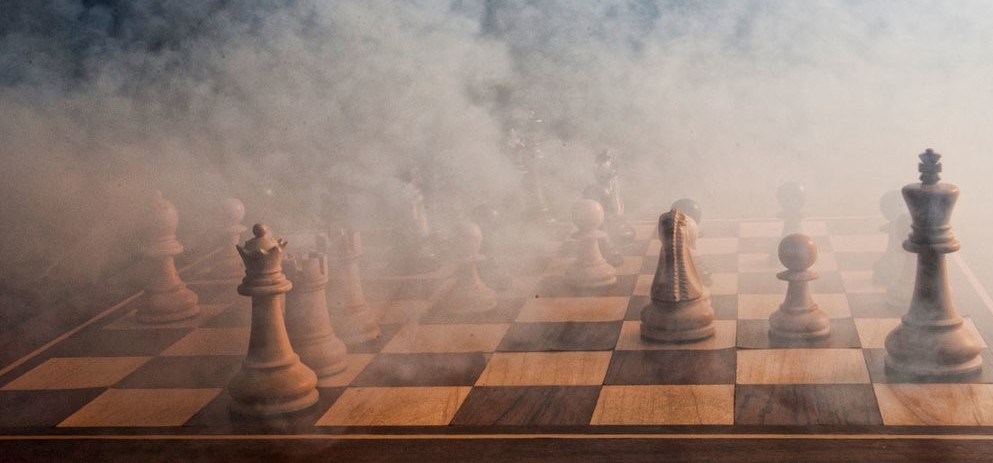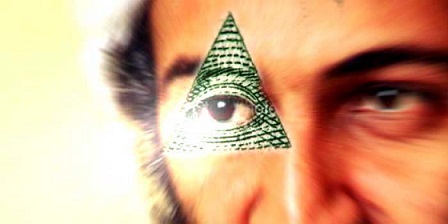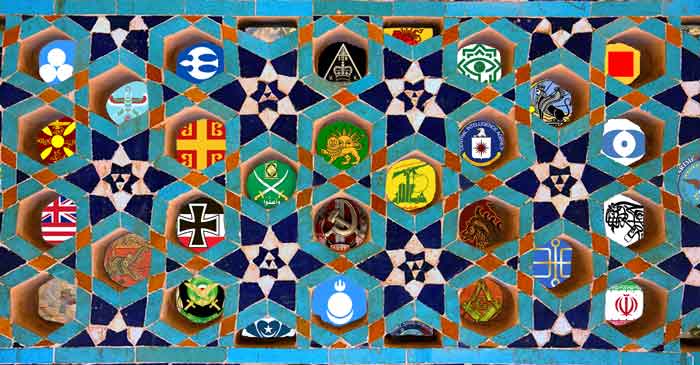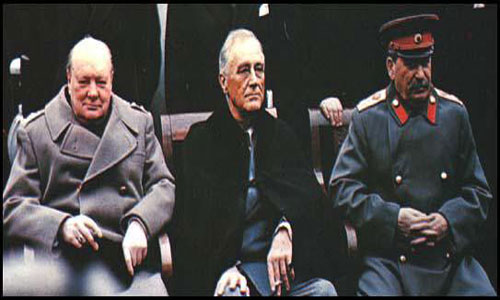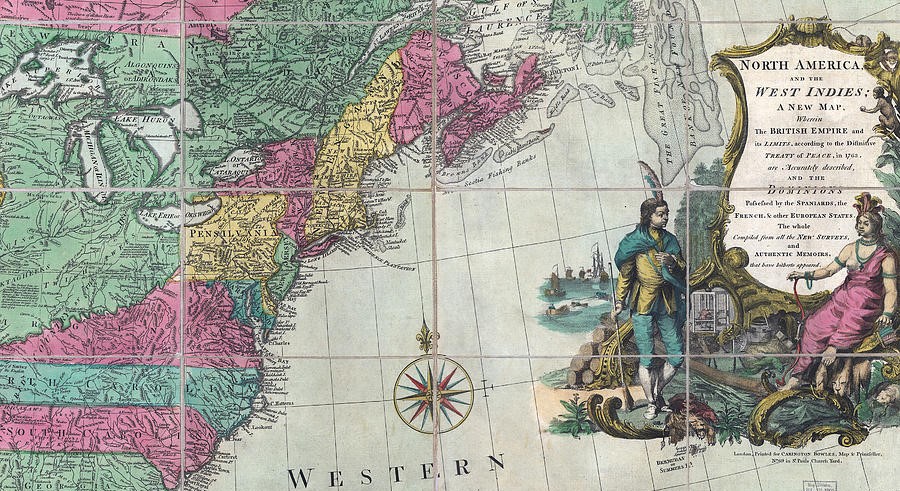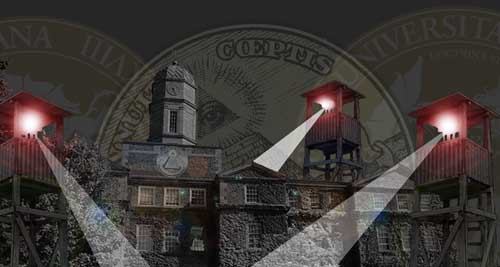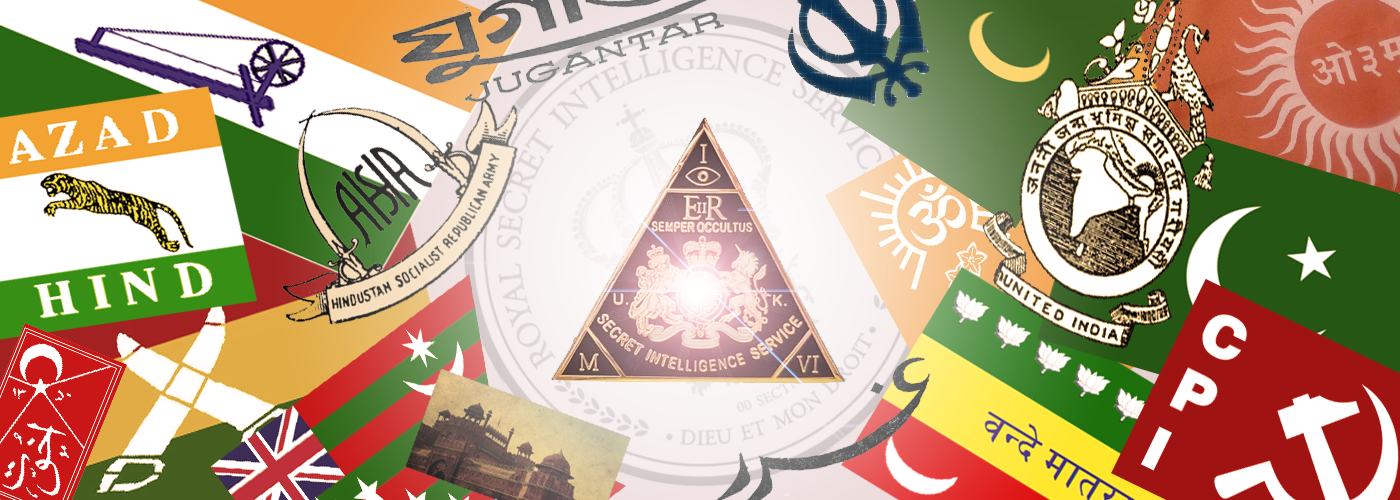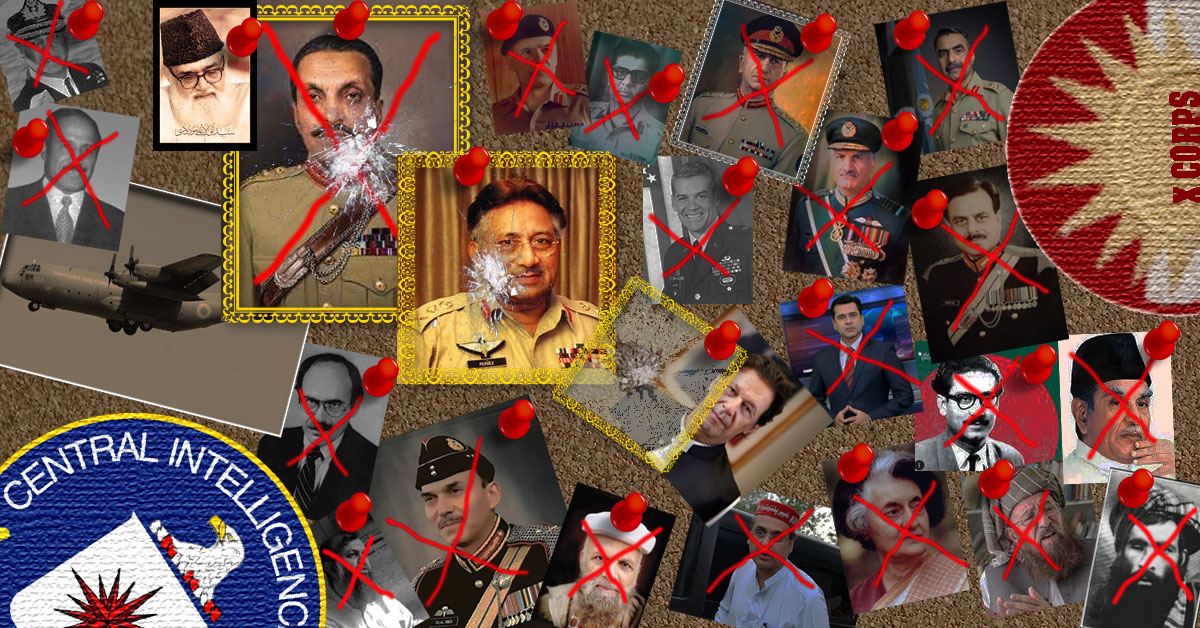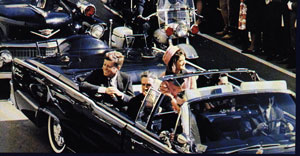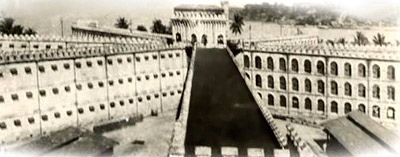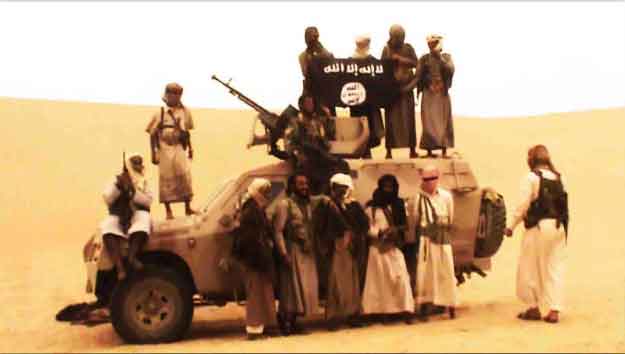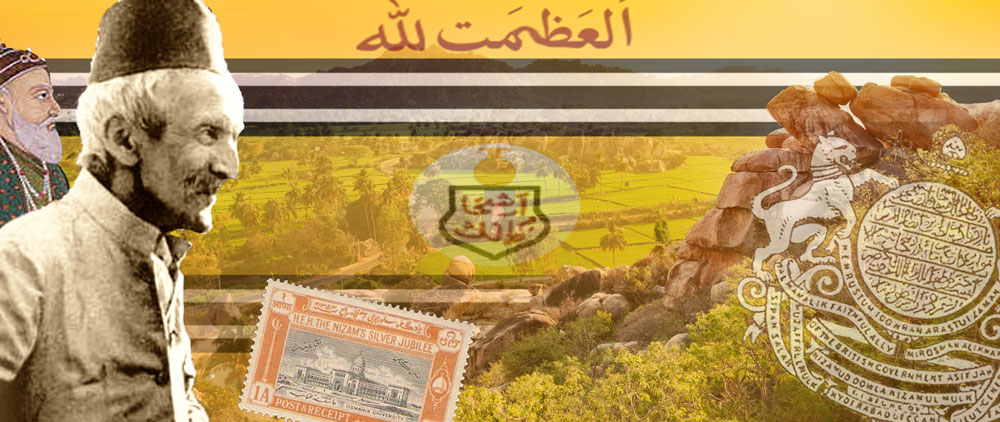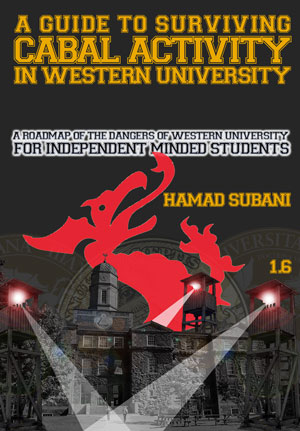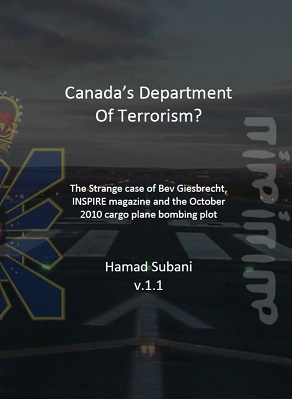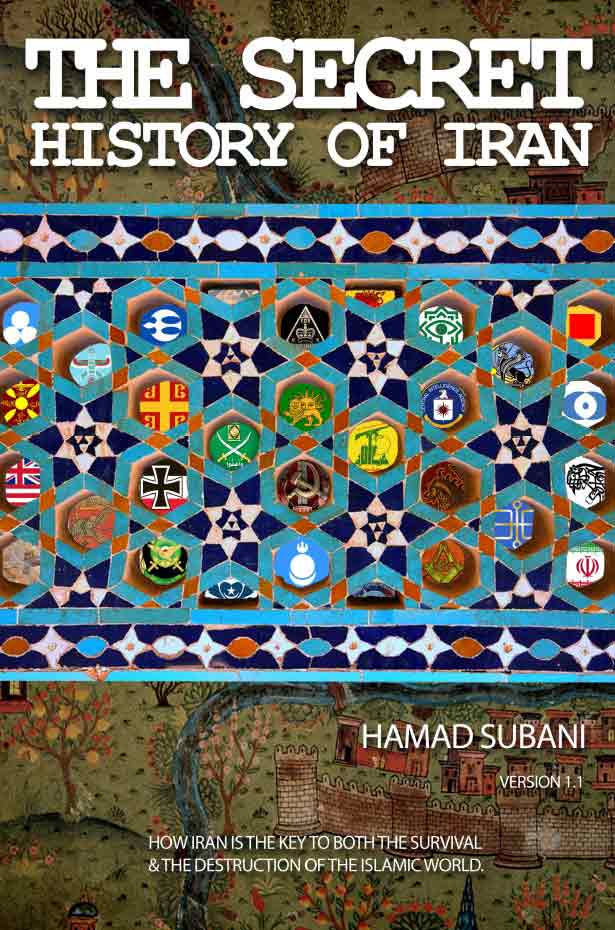
Later “Freedom Movements” that follow the 1857 Rebellion Playbook
Let’s go back to my original thesis:
As most readers may know, British India became “free” in 1947, and the very same year, it was partitioned. The Congress Party, under the spiritual influence of Gandhi came to inherit India, but Gandhi got assassinated a year later. However the Congress Party continued to rule India under the Nehru family, and India emerged as a “democratic” Republic. How true the Republic of India has been to Gandhian ideals and to what extent it ended up being subverted by the Phoenicians are other questions, which are beyond the scope of this discussion.Was this really what the Phoenicians intended?
The Phoenicians made considerable efforts to conquer India through the British. Would they give it all up to some local leaders after two centuries, or had they come to stay? A cursory look at a comparable neighbouring country, the utterly dystopian Phoenician project known as the “People’s Republic of China” gives a telling picture of what kind of India they wanted.So how did they fail despite controlling India through the British Empire for more than 190 years? The answer lies in the fact that while the British Empire was a perfect instrument to rob and dominate India, it was still inherently a “Christian civilization.” And it could not be used to push and impose other Phoenician projects such as Communism, and in particular, the abolition of private property and religions of the common people of the Subcontinent. Such a task could only be accomplished by localized Phoenician leaders after a lot of war and bloodshed (Hello Mao).
There have always been Phoenicians in India, among all different groups and religions, who were salivating for such an opportunity. A big secret-project of the British Empire in India was to manoeuvre them to the forefront of Indian society, politics, cinema, literature, industry, religion and culture.In other words, the rise of Gandhi, his spiritual leadership of the Congress party, and the rise of other Congress leaders such as Nehru was unintended happenstance. The Phoenicians had their very own “freedom movements,” manned by local crypto-Phoenician leaders, all gassed up and ready to launch the Indian Subcontinent to the next stage of Phoenician domination. They even intended to have huge violence against the British colonists, the likes of which the Subcontinent had never seen. They even had their own timeline, which would have culminated in the Subcontinent becoming “free” immediately following World War I. So what went wrong?
Salvaging the “Original Blueprint”
Consider the following stages as a reconstruction of the “Original Blueprint” of how the Phoenicians intended India’s Freedom Movements to operate.
Stage 1: Insertion of Localized Phoenicians among Genuine Freedom Fighters
Local crypto-Phoenician leaders were to be carefully grafted among genuine freedom fighters, and imposed upon Freedom Movements. They would also operate their own “Movements.”
Local crypto-Phoenician leaders were to be carefully grafted among genuine freedom fighters, and imposed upon Freedom Movements. They would also operate their own “Movements.”
By 1909, a special “Cellular Jail” had popped up on the British penal settlement of Andaman Islands. A remarkable feature of the new jail cells was that no prisoner could see his neighbour, and unlike before, the prisoners had almost no social life, sometimes spending weeks in solitary confinement. This was done so that the crypto-Phoenician leaders could be sentenced to languish in the Cellular jail* and build some “Freedom Fighter” cred whereas in reality, they could be living it big in neighbouring Ross Island, or be on a tour Europe in First Class. Of course, they would be trotted into the Cellular jail occasionally, usually on the occasions when all the other imprisoned freedom fighters were engaged in group work, so that they could build some “Freedom Fighter cred. They also got to circulate their writings among the genuine freedom fighters imprisoned there.
* With that being said, of the list of known prisoners in the Cellular Jail after its construction in 1909 (which again, is a small fraction of the actual number of prisoners), I believe that special Spook prisoners are less than 3%. However, they are fairly prominent.

We have seen this going on with some select “freedom fighters” of 1857 such as Fazl-e-Haq Khairabadi, even before the Cellular jail was constructed on the penal settlement. With the construction of the Cellular jail, this would go into high gear. Some curious political prisoner cases at the Cellular Jail are as follows:
- Sachindra Nath Sanyal (associated with the Hindustan Socialist Republican Association). Gets sentenced twice to the Andamans, but gets back in India both times!
- The brother of Aurobindo, Barin Ghose. Being a British national, he should have never even been tried in British India. Yet he made a confessional statement taking entire responsibility,[1]S.N. Agarwal. The Heroes of the Cellular Jail Rev. Edition (New Delhi: Rupa) 94. so as to prevent additional investigation of a conspiracy he was involved in. Strangely enough, he allegedly escapes the Cellular Jail in 1915 and joins Bagha Jatin in Balasore. This is downright unbelievable. He is supposedly caught and sent back to the Cellular Jail, but is released in 1920. (assuming he was in the Cellular Jail).
- Govindcharan Kar participated in revolutionary activities in World War I and was sentenced to seven years in the Andamans.[2]S.N. Agarwal. The Heroes of the Cellular Jail Rev. Edition (New Delhi: Rupa) 199. After his supposed release, he resurfaces in the Kakori Conspiracy of Hindustan Socialist Republican Association, and is again sentenced to the Andamans!
- The Savarkar brothers had turned the Cellular Jail into a laboratory for social experiments. They would make incidents to create opposing groups of prisoners among the Hindus and the Muslims. To quote, “[The Savarkar brothers] always took delight in creating disaffection in the jail.”[3]Bhai Parmanand, trans. Sundra Iyer and Lal Chand Dhawan, The Story of my Life (Lahore: The Central Hindu Yuvak Sabha: 1934). p. 126. Needless to say, most prisoners were in desperate straits, and getting through every day was an ordeal. The Savarkar brothers could not have mustered the resources for such experiments unless they had the support of prison authorities.

There are rumours that there was a secret tunnel connecting Port Blair to the five star resort-like Ross Island. It seems the entrances were dynamited when the British left, and Ross Island was turned into a restricted area. There were also rumours that certain wings of the jail had special cells for “special prisoners” that could move in and out of the Cellular jail through secret passages. These wings were hurriedly demolished later on.
Some of the organizations that participated in the Freedom movement but were of mysterious origin were the Anushilan Samiti, a proto-Communist organization) Jugantar (closely linked to the former), the Ghadr Party, the Hindustan Socialist Republican Association, the Indian Liberal Party, the All India Muslim League (linked to the Nizari-Ismaili leader Agha Khan III), the Swaraj Party, Shivaji Samity, Matrivedi, Bharat Mata, The Free India Society, Abhinav Bharat/Mitra Mela, the Hindu Mahasabha, the Society for the Removal of Obstacles, the Arya Samaj……the list goes on and on. We will only be discussing some of the more prominent ones. Also, any organization connected to Aurobindo Ghosh, Agha Khan III, M.N. Roy and V.D. Savarkar comes under this category.
Stage 2: The transfer of Afghanistan to the British Empire
Afghanistan was to be added to the British Empire (and it would later be transferred to Pakistan when it would come into being). The British-Phoenicians had no intention to leave the Subcontinent with Afghanistan remaining as an independent country. The British Empire had always sought to control and subjugate the independent-minded people of Afghanistan. But their first attempt ended up in a total rout. In their second attempt, they managed to impose some terms and conditions on Afghan rulers, but they could not tolerate the existence of Afghanistan as an independent country.

Stage 3: The 1857 project all over again (but this time, the British at the receiving end of the Violence)
Local crypto-Phoenician leaders were to “liberate” the entire Indian Subcontinent in a repetition of the 1857 Project. Just like the 1857 Project, this would be a unified effort, spanning different religions and groups. They would literally massacre and lynch the British on the streets. But of course, the Phoenicians, in particular, British Intelligence personnel would be quietly spared. Remember that the common British Colonial employee would stupidly perish than muster the gall the question unreasonable orders. They did even more ridiculous things in the past, such as being ordered to march into the unfamiliar terrain of Afghanistan without invitation, and being ordered to walk towards (I repeat walk, not charge) German trenches manned by machine guns. The Phoenicians had to do this to slow the pace of World War I, as an immediate Allied victory would mean no time for the Soviet Union (a major Phoenician project) to make territorial gains. Even present-day, semi-literate American grunts are not that stupid.

And again, the Phoenicians are sanguine people and love violence. The violence against the British would cement the position of Local crypto-Phoenician leaders among the masses. The masses would accept these nobodies as their messiahs. Remember that the British had literally become a Public Enemy in many parts of India, and so, violently opposing them would create a populist fervour, and establish the legitimacy of the crypto-Phoenician leaders for decades to come. This was borrowed from the playbook of neighbouring China, where the Communist Party came to power by pretending to fight Imperial Japan.
The timeline for this “Liberation” of India was immediately following World War I. It could not be done before that because countless Indian soldiers of British India had been deployed to the Middle East to do the donkey work of dismantling the Ottoman Empire. This was a high priority project for the Phoenicians which could not be jeopardized. While British India would also see limited mobilization in World War II, participation of British-Indian soldiers in World War II was comparatively limited.
As such, we repeatedly see tropes, locations and tactics that were used in the original 1857 Project being recycled countless times. Whenever this happens in our discussion, you will see the graphic on the right with some explanatory text, intended to alert you that the 1857 Playbook is being used again.
Stage 4: British Counterstrikes take out Genuine Leaders

Having a violent struggle against the British Empire would be used to shape the direction of the Freedom Struggle (Picture a gardener artfully trimming a hedge), as the British had a monopoly on violence. British counter-violence would be used to prevent the natural emergence of genuine leaders, as the British would go around merrily executing and assassinating all genuine leaders of the Freedom Movements. British Intelligence would ensure that all the legitimate leaders who emerged got culled. On the other hand, the local crypto-Phoenician leaders would always be allowed to “escape” assassination, and would be the only ones left standing when the British finally left.
We see this phenomenon in recent times in Afghanistan, in which NATO deliberately pursued violence against the Taliban (despite their appeals for peace and dialogue). This allowed them to assassinate their genuine leader, Mulla Umar, and kill other Taliban leaders in drone/missile strikes. When the United States finally left Afghanistan, the Taliban they left behind to inherit the country was now chock-full of compromised and grafted leaders.
Stage 5: The British flee India
When the local crypto-Phoenician leaders finally became powerful enough, the Phoenicians among the British colonial administration would quietly sail to the Andaman Islands and watch the British Empire in India implode from afar. These islands were meant to be permanent British bases.
Stage 6: Partition and the Establishment of Separate Nation States
While the Subcontinent would be liberated by a unified Freedom Struggle, immediately thereafter, orchestrated religious violence would explode, and three nations would be created for Hindus, Muslims and Sikhs. All the three nations would be based on religious identity. As the end goal was to establish Communism in India (the biggest nation state) and to abolish private property and religion for commoners. It was thus necessary to cloister all Muslims into West Pakistan and East Pakistan (now Bangladesh), rather than risk letting them engage in future resistance to atheistic Communism.
In addition to these nation states, numerous crypto-Phoenician “princely states” would also emerge as little nations in their own right. Kashmir was to emerge as the most powerful princely state. They already occupied a landmass almost equivalent to British India. They were allowed to coexist because Phoenicians had already usurped their royal bloodlines by having crypto-Phoenician women marry into them. They comprised almost half the area of British India.

Stage 7: War
Pretty soon, the newly established Hindu, Muslim and Sikh states would end up fighting huge wars, resulting in huge loss of life on either side. This would be the equivalent of the so-called “Cultural Revolutions” of Mao, in which more than 78 million of Chinese citizenry perished. It was only after such horrendous loss of life, culture and intelligentsia that Communism could be established in China. A similar plan was afoot for India.
Stage 8: Superpower Colonies
The Muslim states (Crypto-Phoenician monarchies by now) would be adopted by NATO and India would become a satellite of the Soviet Union, which by then would have shifted completely towards Communism. Both nations would be completely dependent on the superpowers, and in essence, their colonies. Superpowers would also be involved with the Sikh nations and the princely states, playing one against the other.
Additional Notes on “Stage 1: Insertion of Localized Phoenicians among Genuine Freedom Fighters”
This Stage turned out to be the most successfully executed, and therefore some additional discussion is warranted. Not only were localized Phoenicians inserted as leaders of different groups, they were given all necessary means to engage in a violent struggle against the British. This was done in the following way:
- Providing recruits of these compromised groups with military training.
- The easiest way to accomplish this was to have the recruits (and leaders) of these groups drafted in the British-Indian army in World War II, but instead of being marched to their deaths in the Middle East or doing donkey work in the desert heat, they would receive extensive training in using radios, piloting and maintaining aircraft, explosives, rifles etc. This conduit also allowed British Intelligence to insert thousands of their paid operatives into the Freedom Movement, who continued to be on their payroll even after independence! The (British) Indian Military Academy at Dehradun was a notorious Spook school, which churned out thousands of military men, who while going on to play a major part in the Freedom Movement, still remained in the payroll of British Intelligence.
- The Ghadarite Udham Singh participated in World War I, and saw action in Basra and Baghdad. He served in the British Artillery units in Hong Kong. He later started training other Ghadarites destined for action in India at Baba Jawala Singh’s 500 acre training camp near Berkely.
- There was a Military School at the Spookopolis of Baroda where many of these recruits (and their leaders) received military training.
- Some were sent to Germany, Imperial Japan, Russia and even France to receive military training, especially in the handling of explosives. It is evident that hurling explosives at cars/carriages carrying British officials was intended to be a major part of the upcoming war. Faraway Germany was caught providing actual arms, explosives and ammunition to these groups on several occasions.
- The easiest way to accomplish this was to have the recruits (and leaders) of these groups drafted in the British-Indian army in World War II, but instead of being marched to their deaths in the Middle East or doing donkey work in the desert heat, they would receive extensive training in using radios, piloting and maintaining aircraft, explosives, rifles etc. This conduit also allowed British Intelligence to insert thousands of their paid operatives into the Freedom Movement, who continued to be on their payroll even after independence! The (British) Indian Military Academy at Dehradun was a notorious Spook school, which churned out thousands of military men, who while going on to play a major part in the Freedom Movement, still remained in the payroll of British Intelligence.
- Providing capital to these groups: This was accomplished in two ways:
- Giving them cash intended for Indian banks! This was arranged by conducting brazen, well-coordinated train robberies, complete with gunfights. Needless to say, British Intelligence had to provide them precise pointers such as which trains were carrying cash intended for deposit at banks, and how many guards were on board the trains.
- Having the groups kidnap rich Hindu businessmen for ransom. Needless to say, British Revenue Services could always help in selecting suitable candidates.
- Recruitment of “Freedom Movement” leaders and supporters among Indians settled in Western countries (or other British Colonies): The British had built a formidable surveillance society in British India, where a large section of the local population supplemented their income by spying for the British. Literally anything suspicious got reported to the British-Indian Police. And now these informants were making a killing by busting up the newly created “Freedom Movements.” It was therefore decided that overseas Indians could be tasked with coordinating support for these new “Freedom Movements.” This would prevent the local British-Indian police from instantly arresting them, as they needed to be extradited from elsewhere. This helped delay things and obfuscate the trail to British Intelligence. It is important to note that Indians settled in other Western countries (or other British Colonies) were usually needy people, literally dependent on the racist and prejudiced governments of these countries for their visas (and acquisition of citizenship, though rare back then because of racism and prejudice). They were already watched with suspicion by the hawk eyes of the Intelligence Agencies of these countries (read: Phoenicians). It only makes sense that the Intelligence Agencies of these countries (and British Intelligence, when it came to Indians in Britain and other British Colonies) would happily recruit such needy people for another Phoenician project. Among Indians settled in Western countries (or other British colonies), the following are to be noted.
- Indians coordinating revolutionary activity while based in Britain, or connected to the India House in London should be viewed with suspicion for obvious reasons. Most Indian students making the investment to study in London avoided this place like the plague, as it was watched by British authorities, and being affiliated with it was a bad career move. In other words, the only people who affiliated with it and also had their careers/visas intact were Spooks. Interestingly, the founder of India House died in Geneva, Switzerland! While the National Indian Association at Bristol was not directly involved with revolutionary activity, this organization too, became infiltrated by Spooks.
- Punjabis and Sikhs on the West coast of Canada and USA were still culturally tied to the Spookdom of Punjab. As such, the Phoenicians already had their tentacles in their overseas communities. In fact, the Ghadr Party was originally known as the Pacific Coast Hindustan Association.

In neighboring China, a man named Mao came out of the Yale University, in particular, its Skull and Bones Secret Society.
- Military Support from Germany and Japan: “Freedom Movement” leaders and supporters among Indians settled in Western countries (or other British Colonies) did not fare well because many of these countries were still allied with Britain in World War I (and later, World War II). Their racist and prejudiced lower level police and intelligence operatives were more than happy to report suspicious immigrants. As a result, such groups ended up imploding (as we see in the case of the Hindu German Conspiracy trial of San Francisco, 1917) and it became necessary for the Phoenicians to move the leadership of these movements to Germany and Japan, which were not allied with Britain.
The following should be considered as Overseas Spookopolis’ that coordinated the compromised “Freedom Movements” in India.
- London: In particular, the India House. Duh.
- Lala Har Dayal Mathur, Bhai Parmanand, V.D. Savarkar were all in London in the same timeframe.
- The founder of India House, V.D. Savarkar and Hotilal Verma initially met in London.[4]S.N. Agarwal. The Heroes of the Cellular Jail Rev. Edition (New Delhi: Rupa) 97. Hotilal Verma of Haryana was the editor of the Urdu weekly Swarajya, which later got banned in India.
- Berlin: Germany being an opposite party to Britain in World War I and II greatly helped in reducing suspicion as to why a European power was assisting Indian Freedom fighters .No plebs could make the connection between both the British Empire and modern Germany being Phoenician powers.
- Vancouver
- Seattle
- Vishnu Ganesh Pingle was enrolled at the University of Washington in Seattle.
- Shanghai
- Even before Mao and the Communists, Many Indian “Revolutionaries” coordinated with his predecessor, Sun Yat Sen.
- San Francisco
- Vienna
- Washington DC
- Pandurang Sadashiv Khankhoje, a founder of the Ghadar Party was enrolled in Washington State University.
- Portland
- Pandurang Sadashiv Khankhoje along with Pandit Kanshi Ram founded the Indian Independence League in Portland, Oregon.
- Oxford
- Palo Alto
- New York
- In USA, Bhai Parmanand was operating out of New York.[5]Bhai Parmanand, trans. Sundra Iyer and Lal Chand Dhawan, The Story of my Life (Lahore: The Central Hindu Yuvak Sabha: 1934). p. 48.
- Stanford University
- Lala Har Dayal was appointed a Professor of Sanskrit and Hindu Philosophy at Stanford.[6]Bhai Parmanand, trans. Sundra Iyer and Lal Chand Dhawan, The Story of my Life (Lahore: The Central Hindu Yuvak Sabha: 1934). p. 60. Strangely, he morphed into a Communist shortly after.
- The President of Stanford University helped M. N. Roy escape to Mexico!
- Berkeley University
- Lala Har Dayal, Tarak Nath Das, Kartar Singh Sarabha and V.G. Pingle are associated with Berkeley.
- Prithvi Singh Azad met Lala Har Dayal Mathur at Berkeley.
- The Ghadr Newspaper also emerged from Berkeley.
- We are told that a Sikh potato farmer Baba Jawala Singh leased a 500-acre ranch in Holtsville, near Stockton (an hour away from Berkeley). The Holtsville farm was a secret guerilla-warfare training facility for Ghadarites.
- A Ghadarite Harnam Singh Saini lost his hand while working with explosives at this farm.[7]S.N. Agarwal. The Heroes of the Cellular Jail Rev. Edition (New Delhi: Rupa) 177.
- Columbia University
- Few people know that before Lala Lajpat Rai became associated with spreading communalism in the Punjab, he was giving lectures at Columbia University and Tuskegee University, and hanging out with Communists like M. N. Roy in New York. Arya Samaj activist Bhai Parmanand was closely connected to Lala Lajpat Rai.[8]Bhai Parmanand, trans. Sundra Iyer and Lal Chand Dhawan, The Story of my Life (Lahore: The Central Hindu Yuvak Sabha: 1934). p. 66.
- Harvard University
- Lala Har Dayal intended to go to Harvard.[9]Bhai Parmanand, trans. Sundra Iyer and Lal Chand Dhawan, The Story of my Life (Lahore: The Central Hindu Yuvak Sabha: 1934). p. 51.
- Mexico City: This is where Indian-origin Spooks ended up after lower level American authorities became too suspicious and started raising alarm.
- Pandurang Sadashiv Khankhoje and M. N. Roy both end up in Mexico, along with Hirambalal Gupta.
- Paris
- Hemchandra Kanungo (Anushilan Samity) and Pandurang Bapat (aligned to Bal Gangadhar Tilak) got trained in bombmaking by “Russian anarchists” while in London and Paris.
- Moscow: The Soviet Union posing as a sympathiser of the working class greatly helped in reducing suspicion as to why a foreign power was assisting Indian Freedom fighters (Although the Soviet Union turned out to be an even more brutal colonist). No plebs could make the connection between both the British Empire and the Soviet Union as Phoenician powers.
- N. Roy will be discussed in detail later.
- Ghadr Party operative Prithvi Singh Azad spent many months in Russia.
- The military school at Tashkent, former Soviet Union.
- Tokyo: Japan being an opposite party to Britain in World War II greatly helped in reducing suspicion as to why a foreign power was assisting Indian Freedom fighters. Plebs could not figure out that Imperial Japan was a Phoenician creation.
- British Hong Kong
- The Gurudwara in Hong Kong was an important focal point of the Ghadr Party.
- Dutch Indonesia
- Thailand
- Many members of the Ghadr party escaped to Thailand after the failed Rebellion in the Punjab.
- The French Carribean island of Martinique
- Lala Har Dayal was here, and Bhai Parmanand stopped by for a visit![10]Bhai Parmanand, trans. Sundra Iyer and Lal Chand Dhawan, The Story of my Life (Lahore: The Central Hindu Yuvak Sabha: 1934). p. 49.
- Geneva
- Bhai Parmanand meets with Sardar Ajit Singh in Geneva, where it seems he had briefly settled.[11]Bhai Parmanand, trans. Sundra Iyer and Lal Chand Dhawan, The Story of my Life (Lahore: The Central Hindu Yuvak Sabha: 1934). p. 63.
CONTENTS
- The Secret History of British India’s “Freedom Movements.”
- An Introduction to the “1857 Project”
- The 1857 Project as a Spook Playbook for later Ops in the Subcontinent
- Phoenician Spookopolis’ Across the Subcontinent
- A (long) note on Fazl-e-Haq Khairabadi
- The Strange Fate of Jhansi State
- Later “Freedom Movements” that follow the 1857 Rebellion Playbook
- How the Blueprint Unfolded Part I – The Bengal Front
- How the Blueprint Unfolded Part II -The Ghadr Party and the Punjab Front
- How the Blueprint Unfolded Part III -The Communalists
- How the Blueprint Unfolded Part IV – The Non-Cooperationists
- Conclusion; Revisiting the “Original Blueprint” + Epilogue: Reactivation!
| ↑1 | S.N. Agarwal. The Heroes of the Cellular Jail Rev. Edition (New Delhi: Rupa) 94. |
|---|---|
| ↑2 | S.N. Agarwal. The Heroes of the Cellular Jail Rev. Edition (New Delhi: Rupa) 199. |
| ↑3 | Bhai Parmanand, trans. Sundra Iyer and Lal Chand Dhawan, The Story of my Life (Lahore: The Central Hindu Yuvak Sabha: 1934). p. 126. |
| ↑4 | S.N. Agarwal. The Heroes of the Cellular Jail Rev. Edition (New Delhi: Rupa) 97. |
| ↑5 | Bhai Parmanand, trans. Sundra Iyer and Lal Chand Dhawan, The Story of my Life (Lahore: The Central Hindu Yuvak Sabha: 1934). p. 48. |
| ↑6 | Bhai Parmanand, trans. Sundra Iyer and Lal Chand Dhawan, The Story of my Life (Lahore: The Central Hindu Yuvak Sabha: 1934). p. 60. |
| ↑7 | S.N. Agarwal. The Heroes of the Cellular Jail Rev. Edition (New Delhi: Rupa) 177. |
| ↑8 | Bhai Parmanand, trans. Sundra Iyer and Lal Chand Dhawan, The Story of my Life (Lahore: The Central Hindu Yuvak Sabha: 1934). p. 66. |
| ↑9 | Bhai Parmanand, trans. Sundra Iyer and Lal Chand Dhawan, The Story of my Life (Lahore: The Central Hindu Yuvak Sabha: 1934). p. 51. |
| ↑10 | Bhai Parmanand, trans. Sundra Iyer and Lal Chand Dhawan, The Story of my Life (Lahore: The Central Hindu Yuvak Sabha: 1934). p. 49. |
| ↑11 | Bhai Parmanand, trans. Sundra Iyer and Lal Chand Dhawan, The Story of my Life (Lahore: The Central Hindu Yuvak Sabha: 1934). p. 63. |


